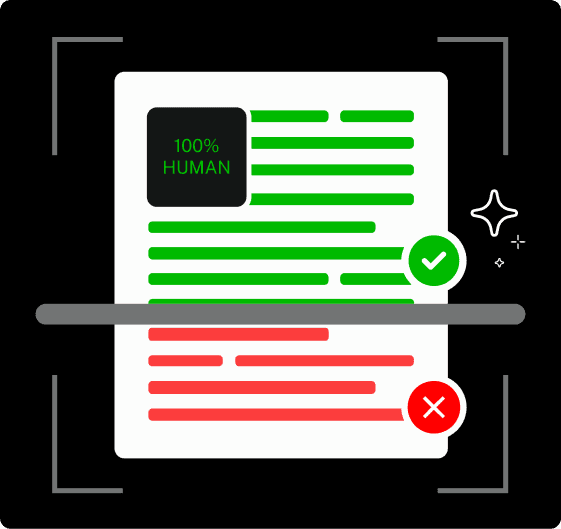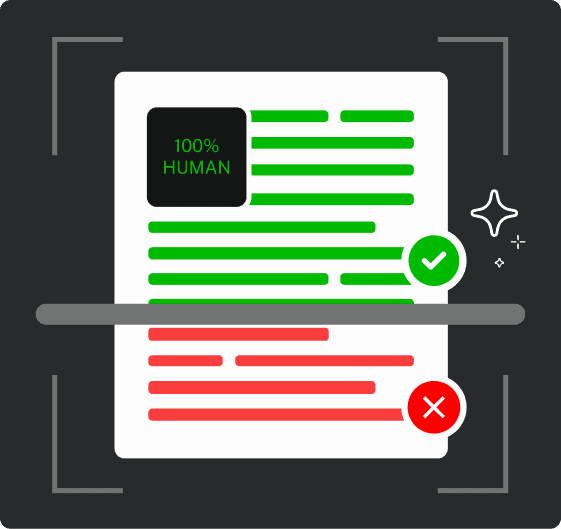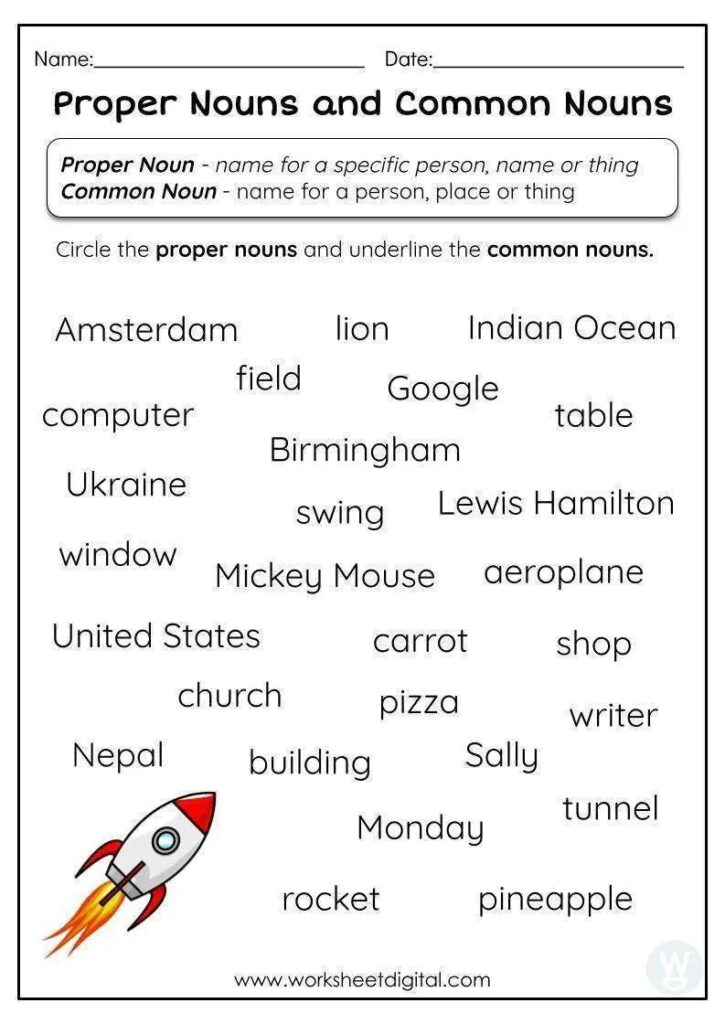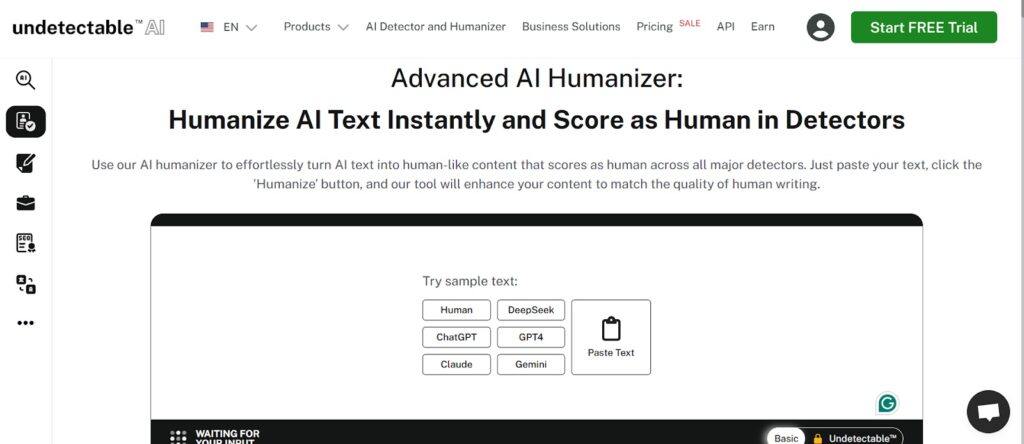What do you see around you?
A chair. A table. The phone you’re holding right now. A book. Maybe a window with sunlight streaming through.
Without even trying, you’ve just spotted five common nouns.
So, what is a common noun?
It’s a part of speech that comes under the category of nouns.
Simply put, it’s a general name for any person, place, thing, or idea.
While “doctor” is a common noun, “Dr. Smith” is not. While “city” is common, “Paris” is not.
In this blog, we’ll break down everything about common nouns.
You’ll learn what they are and their different types, how they differ from proper nouns, how to use them correctly in sentences, and the most common mistakes to avoid.
Let’s dive in.
Key Takeaways
- Common nouns are general names for people, places, things, or ideas—always lowercase unless starting a sentence.
- Different types of common nouns are: concrete (touchable), abstract (felt), and collective (grouped), countable and uncountable nouns.
- Context is king. The same word can shift between common and proper depending on how you use it. “school” is common, “Harvard School of Medicine” is proper.
- Use articles wisely: “a,” “an,” and “the” clarify meaning and precision.
- Avoid the common traps: Don’t capitalize general job titles, avoid “an” with uncountables like “advice,” and remember days are proper nouns
What Is a Common Noun? (Definition)
A common noun is a general name for a person, place, thing, or idea.
It’s the difference between a common noun and a proper noun, like city is common and New York is specific.
The core concept here is specificity. Common nouns refer to a category or class of things, not specific names.


Never Worry About AI Detecting Your Texts Again. Undetectable AI Can Help You:
- Make your AI assisted writing appear human-like.
- Bypass all major AI detection tools with just one click.
- Use AI safely and confidently in school and work.
If you say teacher, you could mean any teacher in the world. But if you say Mrs. Smith, now you’re naming a specific person, which makes it a proper noun.
Here are some more examples:
- Person: teacher, doctor, student → general = common nouns
Mrs. Smith, Dr. Johnson → specific = proper nouns - Place: city, school, park → general
New York, Harvard, Central Park → proper - Thing: book, car, phone → common
iPhone, Toyota Camry, Harry Potter → proper - Idea: happiness, freedom, love → broad, intangible concepts = common nouns
Types of Common Nouns
The different types of common nouns are:
1. Concrete Nouns
These are nouns you can see, hear, touch, smell, or taste—things that exist in the physical world.
Examples:
- apple (you can eat it)
- table (you can touch it)
- child (you can see and hear them)
If you can use your five senses to detect it, it’s concrete.
2. Abstract Nouns
These refer to ideas, feelings, qualities, or states—things you can’t perceive with your senses.
Examples:
- freedom (you can feel it, but not touch it)
- joy (an emotion, not a physical thing)
- anger (you can sense it internally, but not hold it)
Abstract nouns are intangible concepts. They are real, but not physical.
3. Countable Nouns
These are nouns you can count individually. They have singular and plural forms.
Examples:
- car / cars
- book / books
- idea / ideas
You can use numbers with them: three cars, five ideas.
4. Uncountable Nouns
These refer to things that can’t be counted as individual units. They usually don’t have a plural form.
Examples:
- water (you don’t say “two waters” unless you’re talking about bottles)
- rice (it’s a mass of tiny grains, not usually counted one by one)
- information (not “informations”)
These are often substances, materials, or abstract ideas.
5. Collective Nouns
These name a group of people, animals, or things as a single unit.
Examples:
- team (a group of players)
- flock (a group of birds)
- family (a group of related individuals)
Even though they refer to many individuals, they’re treated as singular nouns in most cases: The team wins.
There are some types of nouns which can shift categories.
Example: “Experience”
- He shared an amazing experience. → Countable (a specific event)
- She has a lot of experience in marketing. → Uncountable (general knowledge)
Example: “Chicken”
- The chicken crossed the road. → Countable (the animal)
- We had chicken for dinner. → Uncountable (the meat)
This flexibility is common in English and often depends on how the noun is used, not just what it names.
Common Noun vs Proper Noun
Understanding what is the difference between a common noun and a proper noun is crucial for proper grammar and capitalization.
Both common and proper nouns refer to people, places, things, or ideas. But how they function, appear, and behave in a sentence is quite different.
| Feature | Common Noun | Proper Noun |
| Capitalization | Not capitalized (unless starting sentence) | Always capitalized, regardless of placement |
| Specificity | Generic: refers to any member of a group | Specific: refers to one unique individual/item |
| Articles (a, an, the) | Frequently used: a teacher, the book | Rarely used: not “a Google,” but “Google” |
| Plural Form | Commonly pluralized: schools, doctors | Typically not pluralized: Londons (rare) |
Sometimes, words can shift categories based on usage or context.
1 – Common → Proper
- restaurant → McDonald’s
- president → President Biden
When a title is paired with a name, it becomes proper and is capitalized.
Proper → Common (Genericization)
- Kleenex → now often used generically as tissue
- Band-Aid → widely used to mean any adhesive bandage
This process is called genericization, where a brand name becomes a common noun.
There are also subtle differences between American and British English in how proper nouns are handled:
- Job titles
- American: President of the United States
- British: the prime minister of the UK (less capitalization)
- Institutional references
- American: Congress (capitalized when referring to the U.S. body)
- British: parliament may be lowercase unless paired with “British Parliament”
Always follow style guide consistency. APA, Chicago, MLA, or company-specific standards, especially for formal writing.

Source = Worksheet Digital
To practice identifying common vs. proper nouns, complete these exercises.
Examples of Common Nouns in Everyday Language
To truly grasp how common nouns work, let’s see them in action across different contexts.
People
- The girl wore a red dress and skipped down the sidewalk.
- A doctor checked his heartbeat and asked a few questions.
- The teacher explained the math problem on the board.
- I met an old friend at the train station today.
- Every child in the class drew a picture of their favorite animal.
Places
- The city comes alive at night with lights and music.
- We spent the weekend at the beach, collecting shells.
- She borrowed a novel from the library after school.
- I stopped by the store to buy some bread and milk.
- The meeting will be held in the main office at noon.
Things
- He forgot his phone at home again.
- Her desk was cluttered with notes and coffee cups.
- I just finished reading an amazing book about space travel.
- The car wouldn’t start on the cold morning.
- He pulled out a chair for her before sitting down.
Ideas
- Telling the truth is always better than lying.
- Sometimes, all we need is a little hope.
- Her anger was understandable after what happened.
- The room was filled with a sense of peace.
- Love can be both beautiful and complicated.
Contextual Mini Scenes
- Where’s the book you borrowed? → I left it on the table next to the window.
- After a long day at the office, Jason took his dog to the park. He needed fresh air and some quiet time to think.
- At the beach, children built sandcastles while parents relaxed on towels, sipping drinks and watching the waves.
If you’re curious about trickier grammar topics like what makes a noun abstract or how collective nouns are different from mass nouns, the Ask AI tool can help explain it in a simple way.

It’s great for students who want to learn more or teachers planning lessons.
And if you’re writing something and want it to sound more natural while still using proper grammar, try AI Humanizer.

It helps you keep your writing clear, correct, and easy to read, whether you’re working on something professional or just everyday writing.
How to Use Common Nouns in Sentences

Below is a breakdown of the key usage rules of common nouns:
- Article Usage with Common Nouns
Articles define whether the noun is general or specific. Common nouns frequently appear with articles: a, an, or the, or sometimes with no article at all.
- Use “a” before consonant sounds:
→ I saw a doctor yesterday. - Use “an” before vowel sounds:
→ She ate an apple after lunch. - Use “the” when referring to something specific:
→ The book on the desk is mine. - Omit the article when speaking generally (especially with plurals and uncountable nouns):
→ Books are useful.
→ Water is important for health.
- Pluralization of Common Nouns
Common nouns form plurals in consistent patterns, with exceptions to note.
- Regular plural with -s or -es:
desk → desks
box → boxes - Irregular plural forms:
child → children
mouse → mice - Uncountable nouns remain singular:
Milk is kept in the fridge.
(Not: milks)
- Subject-Verb Agreement
Common nouns must agree with the verb in number, whether singular or plural.
- Countable nouns:
→ The cat runs fast. (singular)
→ The cats run fast. (plural) - Uncountable nouns (always take singular verbs):
→ Information travels quickly online. - Collective nouns:
→ The team wins every match. (American English, singular)
→ The team are discussing their tactics. (British English, plural)
- Possessive Forms
To show ownership, add an apostrophe correctly based on whether the noun is singular or plural.
- Singular noun:
→ The girl’s notebook was missing. - Plural noun ending in s:
→ The players’ locker room is down the hall. - Irregular plural:
→ The children’s toys are scattered everywhere.
- Noun Phrases and Modifiers
Common nouns often appear in noun phrases with articles, adjectives, and quantifiers.
- With articles and adjectives:
→ A red apple
→ The noisy classroom - With quantifiers:
→ Some water, many students, a few problems
These modifiers help add clarity, quantity, and description to the noun.
- Role in Sentence Structure
Common nouns can serve various grammatical roles:
- Subject:
→ The teacher gave us homework. - Object:
→ She bought a book. - Object of a preposition:
→ He sat near the window. - Within a complex sentence:
→ After the meeting, the manager reviewed the report in her office.
- Strategic Style Considerations
Use specific common nouns when clarity matters, and general ones when talking broadly.
- General: A vehicle was parked outside.
- Specific: A blue pickup truck was parked outside.
To avoid repetition, vary your nouns with synonyms or rephrase:
- Repetitive: The book was interesting. The book was long.
- Improved: The novel was interesting but lengthy.
Common Mistakes With Common Nouns
Below are the most frequent pitfalls, with examples and corrections to help you avoid them.
| # | Mistake | Reasoning | Incorrect Example | Correct Example |
| 1 | Improper Capitalization | Don’t capitalize common nouns unless part of a proper noun. | I went to School. | I went to school. |
| 2 | Abstract vs. Proper Confusion | Capitalize school subjects only when used as specific subjects or titles. | I love history and math. | I love History and Math. |
| 3 | Using Vague Nouns | Replace generic words like “stuff” or “thing” with precise nouns. | She gave me some stuff. | She gave me some tasks. |
| 4 | Genericizing Brand Names Improperly | Don’t lowercase or use brand names as common nouns unless widely accepted. | He handed me a kleenex. | He handed me a Kleenex. / …a tissue. |
| 5 | Job Titles Used Generically | Only capitalize when the job title is used with a name or as a formal title. | The President gave a speech. | The president gave a speech. |
| 6 | Uncountable Noun with Article | Don’t use “a/an” with uncountable nouns like advice, information, furniture, etc. | She gave me an advice. | She gave me some advice. |
Experience the power of our AI Detector and Humanizer in the widget below!
FAQs
Are days of the week common nouns?
No, they’re proper nouns because they name specific days like Monday or Friday. That’s why they’re always capitalized.
Is school a common noun?
Yes, “school” is a common noun when used in general. But common and proper nouns can shift based on context. A common noun becomes a proper noun when it’s part of a name, like Harvard School of Medicine.
Can a noun be both common and proper?
Not at the same time, but some words can be either, depending on how they’re used. Example: I saw Mom today (Proper). My mom is cooking dinner (Common).
How do I teach common nouns to kids?
To teach common nouns to kids, use real-life pictures to show general objects like “cat” or “book.” Let them explore new words using Ask AI to check if they’re common or proper.
Conclusion
We have been using common nouns our entire life.
Every conversation, every text message, every grocery list you’ve ever written has been built on these words.
Understanding the difference between common and proper nouns lets you control how specific you are.
The student who writes “I want to study at a university” is keeping it general.
The one who writes “I want to study at Stanford University” is being specific.
Both are correct, but they have entirely different purposes.
Now go forth and noun responsibly!
And next time you’re unsure about capitalization, ask: “Am I talking about any old thing, or am I naming something special?”
Common nouns will keep it humble, and proper nouns will appreciate their moment in the spotlight.
Need help making your writing sound more natural and human? Try Undetectable AI today.
